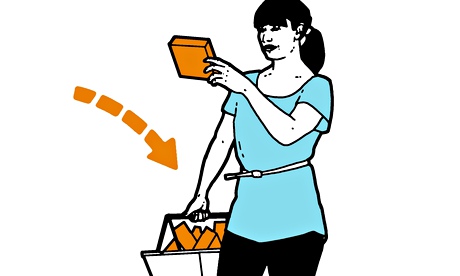
What is it? A range of foods and ingredients free of gluten, wheat or dairy.
How much does it cost? Very slightly more than the foods and ingredients that actually come with gluten, wheat or dairy.
What does it promise? Once confined to dark corners of funny-smelling healthfood shops, these food ranges allow those with intolerances to eat relatively normally. Increasingly, though, they are also being eaten by people without medical need as an ostensibly healthier choice.
What’s it actually like? That depends on what you buy. I went to my local supermarket and filled a basket from the freefrom aisle with hazelnut milk, bakewell tarts made with rice flour and tapioca starch, and gluten-free sausages, all of which managed to taste more or less like the things they were supposed to. But then again, I also bought soya milk, and drinking soya milk is like straining three-week-old yoghurt that’s been kept on a radiator into your mouth through a stranger’s sock.
Best and worst bit If you’re coeliac, it must be refreshing finally to have your needs catered for in a largely edible way. However, as someone who can eat gluten and dairy without issue, I was disappointed not to see any benefits. I didn’t lose weight or feel any more energetic, and my skin remained as pallid as ever. All it really did was remind me how much I love bread.
Is it worth it? If you need to? Yes. If you want to? Go ahead, but try to pick only the foods that taste nice – the last thing you want is an accidental mouthful of soya milk.

